| [1] 常德有,董福慧.骨碎补的研究概况[J].吉林中医药,2006,26(6):61.[2] 眭承志.骨碎补总黄酮对老年性骨质疏松症成骨作用影响的临床与实验研究[J].福建中医学院报,2008,5(10):60-65.[3] Gao HL,Xiao LB,Zhang ZF,et al.Experimental study on effect of rhizoma drynariae flavone on bone destruction of collagen inducted arthritis rat.Zhongguo Gu Shang.2013;26(9):764-767.[4] 金合,李晋玉,俞兴,等.骨碎补总黄酮对颅骨缺损修复大鼠血清碱性磷酸酶、钙、磷的影响[J].中国骨伤,2012,28(9):757-760.[5] Ito F,Fujimori H,Makino K.Factors affecting the loading efficiency of water-soluble drugs in PLGA microspheres. Colloids Surf B Biointerfaces.2008;61(1):25-29.[6] Kompella UB,Bandi N,Ayalasomayajula SP.Subconjunctival nano- and microparticles sustain retinal delivery of budesonide, a corticosteroid capable of inhibiting VEGF expression.Invest Ophthalmol Vis Sci. 2003;44(3):1192-1201.[7] Li M,Rouaud O,Poncelet D.Microencapsulation by solvent evaporation: state of the art for process engineering approaches. Int J Pharm.2008;363(1-2):26-39. [8] 苏峻峰,任丽,立新.微胶囊技术及其最新研究进展[J].材料导报, 2003,17(s1):142-150.[9] 李自成,王浩红.微胶囊及其应用简介[J].化学教学, 2003,25(12): 24-26.[10] 石海军,魏坤,南开辉,等.氧氟沙星PLGA微囊的制备、表征和影响包封率的因素[J].材料科学与工程学报,2009,27(2):282-287.[11] 姚康德,成国祥.智能材料[M].北京:化学工业出版社,2002.[12] Liu P,Guo L,Wang F,et al.The new Targeted Nanoparticles: Tf-Peg-PLL-PLGA Combined with Daunorubicin Overcome Hypoxia Induced Drug Resistance of K562 Cells. Blood. 2014;124(21):929-929.[13] Di Toro R,Betti V,Spampinato S.Biocompatibility and integrinmediated adlhesion of human osteoblasts to poly(DL-lactide-co-glycolide)copolymers.Eur J Pharm Sci.2004;21(2-3):16l-169.[14] Mundargi RC,Ramesh Babu V,Vidhya Rangaswamy V,et al.Nano/micro technologies for delivering macromolecular therapeutics therapeutics (D,L -lactide-co-glycolide) and its derivatives.J Controll Release.2008;125:193-209.[15] Kim DH,Martin DC.Sustained release of dexamethasone from hydrophilic matrices using PLGA nanoparticles for neural drug delivery.Biomaterials. 2006;27(15):3031-3037. [16] Bilati U,Allémann E,Doelker E.Poly(D,L-lactide-co-glycolide) protein-loaded nanoparticles prepared by the double emulsion method--processing and formulation issues for enhanced entrapment efficiency.J Microencapsul. 2005; 22(2):205-214.[17] Ravi Kumar MN, Bakowsky U, Lehr CM.Preparation and characterization of cationic PLGA nanospheres as DNA carriers.Biomaterials.2004;25(10):1771-1777.[18] Bala I,Hariharan S,Kumar MN.PLGA nanoparticles in drug delivery: the state of the art.Crit Rev Ther Drug Carrier Syst. 2004;21(5):387-422. [19] Wang L,Chaw CS,Yang YY,et al.Preparation, characterization, and in vitro evaluation of physostigmine-loaded poly(ortho ester) and poly(ortho ester)/poly(D,L-lactide-co-glycolide) blend microspheres fabricated by spray drying.Biomaterials. 2004;25(16):3275-3282.[20] C.Carrasquillo KG,Stanley AM,Aponte-Carro JC,et al.Non-aqueous encapsulation of excipient-stabilized spray-freeze dried BSA into poly(lactide-co-glycolide) microspheres results in release of native protein.J Control Release. 2001;76(3):199-208.[21] Bittner B,Ronneberger B,Zange R,et al.Bovine serum albumin loaded poly(lactide-co-glycolide) microspheres: the influence of polymer purity on particle characteristics.J Microencapsul. 1998;15(4):495-514.[22] Bala I,Hariharan S,Ravi KumarMNV.PLGA nanoparticlesin drug delivery: the state of the art. Crit Rev Ther Drug Carrier Sys. 2004;21:387-422.[23] Johansen P,Men Y, Audran R,et al.Improving stability&release kinetics of microencapsulated tetanustoxoid by co-encapsulation of additives.Pharm Res.1998;15:1103-1110.[24] Jiang HL,Jin JF, Hu YQ,e tal.,Improvement of protein loading and modulation of protein release from poly(lactide-co-glycolide) microspheres by complexation of proteins with polyanions.J Micro-encapsul.2004; 21:615-624.[25] Vandervoort J, Ludwig A.Biocompatible stabilizers in the preparation of PLGA nanoparticles: a factorial design study.Int J Pharm. 2002;238(1-2):77-92.[26] Murillo M,Gamazo C,Irache JM,et al.Polyester microparticles as a vaccine delivery system for brucellosis: influence of the polymer on release, phagocytosis and toxicity.J Drug Target. 2002;10(3):211-219.[27] Mundargi RC,Babu VR,Rangaswamy V,et al.Nano/micro technologies for delivering macromolecular therapeutics using poly(D,L-lactide-co-glycolide) and its derivatives.J Control Release.2008;125(3):193-209. [28] Yang YY,Chia HH,Chung TS.Effect of preparation temperature on the characteristics and release profiles of PLGA microspheres containing protein fabricated by double-emulsion solvent extraction/evaporation method.J Control Release.2000;69(1):81-96.[29] Reich G.Ultrasound-induced degradation of PLA and PLGA during microsphere processing: influence of formulation variables.Eur J Pharm Biopharm. 1998;45(2):165-171.[30] 辛鹏程,王炜,周秦武,等.低频超声诱导改进的PLGA微囊药物释放的体外研究[J].中国康复理论与实践,2009,15(7):687-690.[31] 张海龙,邵爱平,杨俊杰,等.生物降解材料聚乳酸制备微球的工艺研究[J].齐鲁师范学院学报,2012,27(2):131-134.[32] 杨伟伟,骆广生,伍方昱,等.溶剂挥发法制备萃取剂微胶囊[J].高分子学报,2005,4(2):202-212.[33] 吴景梅,周丽.聚乳酸/磷酸钙复合微球的制备[J].塑料,2010, 39(5): 38-39,81. |
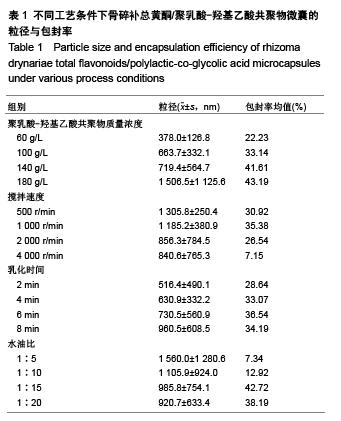
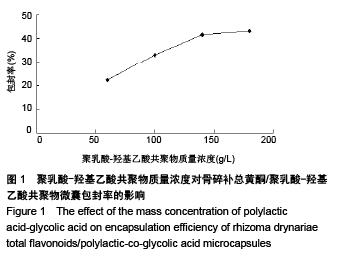
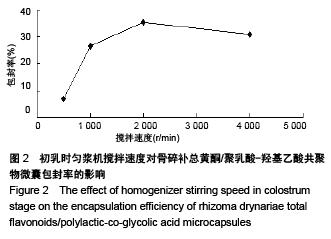
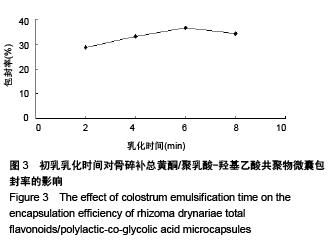
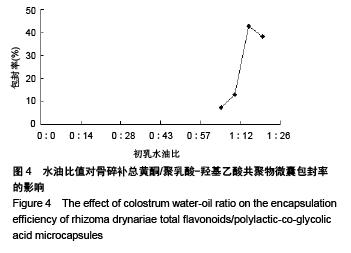

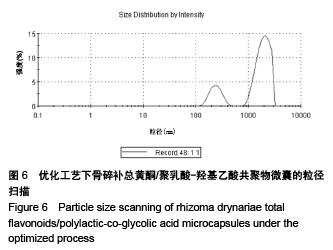
.jpg)